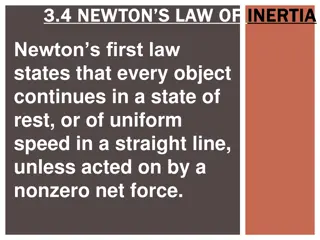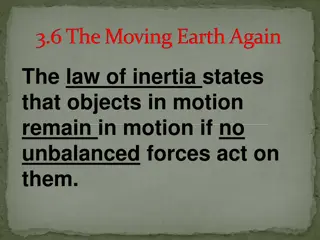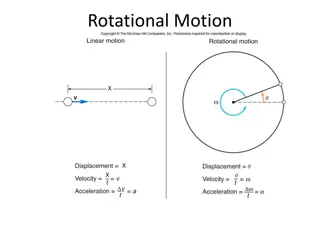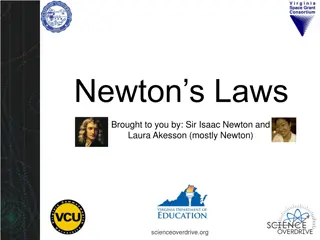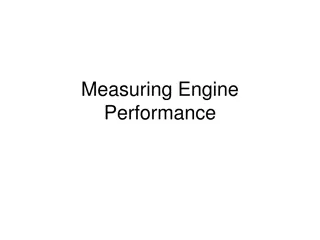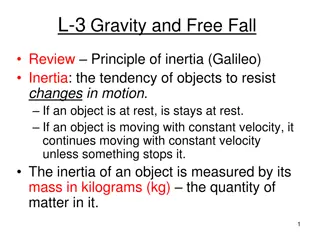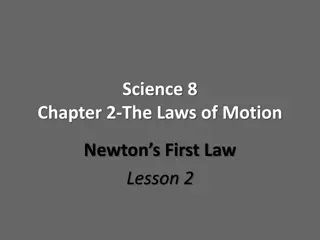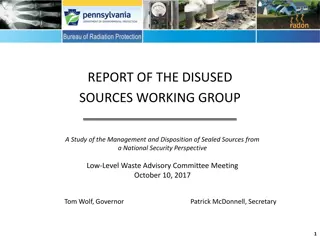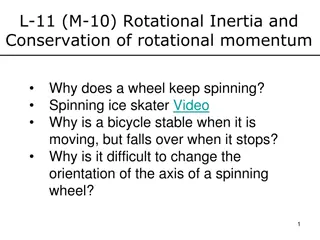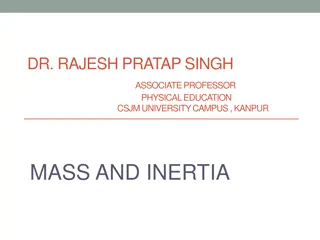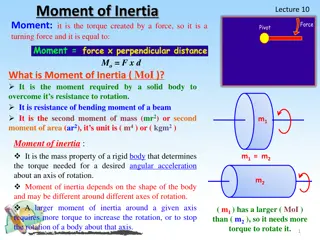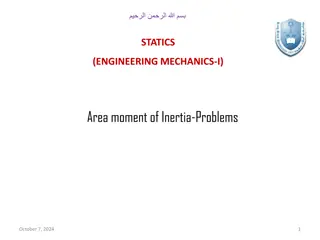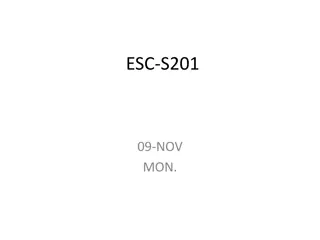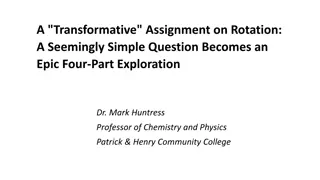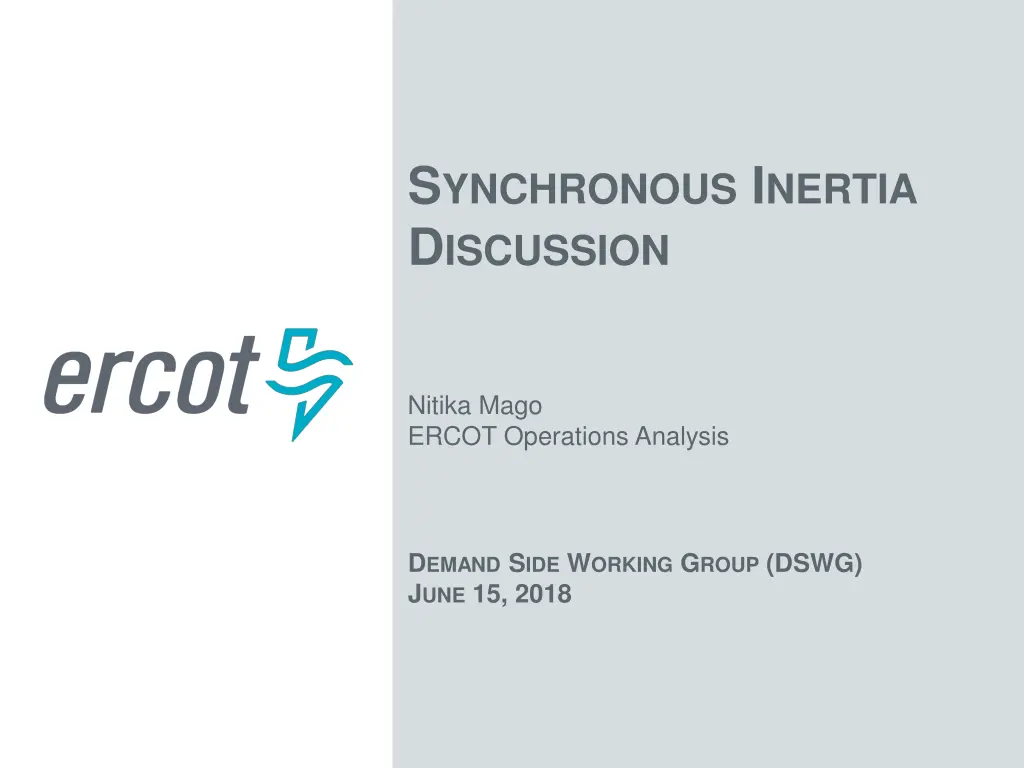
Understanding the Role of Synchronous Inertia in Power Systems
Explore the importance of synchronous inertia in power systems, how it affects frequency response, and the concept of critical inertia. Learn about system stability, responsive reserve services, and maintaining frequency levels in ERCOT operations analysis.
Uploaded on | 1 Views
Download Presentation

Please find below an Image/Link to download the presentation.
The content on the website is provided AS IS for your information and personal use only. It may not be sold, licensed, or shared on other websites without obtaining consent from the author. If you encounter any issues during the download, it is possible that the publisher has removed the file from their server.
You are allowed to download the files provided on this website for personal or commercial use, subject to the condition that they are used lawfully. All files are the property of their respective owners.
The content on the website is provided AS IS for your information and personal use only. It may not be sold, licensed, or shared on other websites without obtaining consent from the author.
E N D
Presentation Transcript
SYNCHRONOUS INERTIA DISCUSSION Nitika Mago ERCOT Operations Analysis DEMAND SIDE WORKING GROUP (DSWG) JUNE 15, 2018
Inertia Background Only synchronous machines provide inertia to the system Everything else provides a response, but does not provide system inertia The level of Inertia on the system is solely a function of the synchronously- connected machines online on the System and their characteristics However, because the synchronously-connected machines that are online at a particular point in time are related to the load and wind generation on the system at that point in time, the system inertia may be correlated with the load and wind generation 2 PUBLIC 2
Inertial Effect Initial rate of change of frequency (RoCoF) prior to any resource response is solely a function of inertia 3 PUBLIC 3
Inertial Effect Slope of the RoCoF line changes due to resources response 4 PUBLIC 4
Inertial Effect Higher Inertia Lower Inertia 5 PUBLIC 5
Critical Inertia Concept The level of inertia which causes the frequency to drop below the UFLS trigger before the fastest resources can provide sufficient frequency response (for the two STP trip) is the CriticalInertia 0.4 Hz 0.5 s 6 PUBLIC 6
Responsive Reserve Service (RRS) System Inertia 2016 RRS is procured to ensure sufficient capacity is available to respond to frequency excursions during unit trips. To Interconnection Obligation, ERCOT must plan not to activate UFLS for loss of 2750 MW of generation. UFLS relays will shed firm load if frequency drops to 59.3 Hz (5% of total ERCOT load). consistently meet BAL-003 Response Frequency Responsive Reserve Requirements 2017 ERCOT plans to maintain frequency nadir at or above 59.4 Hz for loss of 2750 MW (0.1 Hz margin). PUBLIC 7
Critical Inertia Definition Minimum level of system inertia that will ensure LRs will have sufficient time to respond before Frequency hits 59.3 Hz (UFLS threshold) Frequency Response (Loss of 2750 MW) 60.1 60 59.9 59.8 59.7 Frequency (Hz) 59.6 59.5 Tf = LRs Response time 59.4 59.3 59.2 59.1 59 58.9 0 0.2 0.4 0.6 0.8 1 Second 1.2 1.4 1.6 1.8 2 2.2 8 PUBLIC 8
Critical Inertia for ERCOT Frequency Traveling time (From LR setting to ULFS setting) vs. Inertia 2.5 ? = ? ??????? = 3 10 5 ???????2+ 0.0016 ??????? + 0.0048 2 1.5 Critical Inertia: 94 GW*s Second 1 LR Response Time 0.5 0.42s 0 0 50 100 150 200 250 Inertia (GW*s) 9 PUBLIC 9
Current Critical Inertia for ERCOT Currently, the Critical Inertia Level for ERCOT appears to be around 100 GW-s (based on current operations and response characteristics of current resources) Simulation results have shown that below this level RoCoF is high enough that frequency would drop below 59.3 Hz for the two STP trip before LRs start providing response Simulation results have also shown wide-area voltage oscillations at inertia below this level; this is a separate but somewhat related issue as identified in the Panhandle region as weak grid 10 PUBLIC 10
RRS Study Methodology A set of recent cases at varying inertia levels are selected to represent a wide range of expected future inertia conditions. Following assumptions are applied to each case/study, Model 1150 MW of PFR from Generation Resources. Generation mix when, Inertia < 250 GW s: 30% Coal + 70% Gas Inertia 250 GW s: 15% Coal + 85% Gas Load Resources providing RRS will trip at 59.7 Hz, with a delay of 0.416 s (relay delay = 0.333 s; breaker action = 0.083 s). Load damping factor was assumed to be 2% at the system level. Trip 2750 MW of generation simultaneously and identify the amount of LR needed to maintain frequency at 59.4 Hz. PUBLIC 11
Potential Parameters Changes 1. Faster Response UFLS @59.1Hz UFLS @59.3Hz 2. Changing UFLS Settings 0.42s LR Response Time 94 GW*s 71 GW*s 3. Critical Contingency 0.25s LR Response Time 52 GW*s 68 GW*s 12 PUBLIC 12
Potential Parameters Changes - Faster Response Faster response from the Load Resources on high-set under-frequency relays will aid in reducing Critical Inertia ERCOT wants to discuss viability of obtaining response within 15 cycles with various DR providers ERCOT recognizes that the option of faster response is dependent on the types of Load Resources and is probably not viable for all Load Resources LR UFLS @59.3Hz @59.7Hz 0.42s LR Response Time 94 GW*s 0.25s LR Response Time 68 GW*s ERCOT may allow LRs that meet the 15 cycle response requirement to move their trip setting from 59.7 Hz to 59.69 Hz. Since 2011, 14 under frequency events triggered some response from Load Resource providing RRS. 12 events for frequency near 59.7 Hz. 2 events in 2011, 2012 frequency went below 59.7 Hz. In both events frequency was below 59.7Hz for about 26 cycles. 13 PUBLIC 13
DISCUSSION PUBLIC 14 14
Current RRS Table Scenario 1 2 Scenario Scenario 3 Scenario 4 Scenario 5 Scenario 6 Scenario 7 Scenario 8 Scenario 9 Scenario 10 Scenario 11 Scenario 12 2.25:1 2.11:1 1.99:1 1.87:1 1.77:1 1.69:1 1.61:1 1.54:1 1.47:1 1.41:1 1.36:1 1.3:1 LR/PFR Inertia (GW s) PFR Req. (no LR) (MW) RRS 50% Lim (MW) 130 140 150 160 170 180 190 200 210 220 230 240 5246 4916 4620 4361 4132 3927 3743 3576 3424 3285 3157 3040 3229 3162 3090 3039 2984 2920 2868 2815 2772 2726 2676 2643 RRS 60% Lim (MW) 2998 2951 2898 2867 2835 2793 2760 2725 2697 2664 2626 2604 Scenario 13 Scenario 14 Scenario 15 Scenario 16 Scenario 17 Scenario 18 Scenario 19 Scenario 20 Scenario 21 Scenario 22 Scenario 23 Scenario 24 Scenario 25 1.26:1 1.22:1 1.17:1 1.14:1 1.1:1 1.07:1 1.04:1 1.01:1 1.00:1 1.00:1 1.00:1 1.00:1 1.00:1 LR/PFR Inertia (GW s) PFR Req. (no LR) (MW) RRS 50% (MW) 250 260 270 280 290 300 310 320 330 340 350 360 370 2932 2831 2737 2650 2569 2492 2421 2353 2290 2230 2173 2119 2068 2594 2550 2523 2477 2446 2408 2373 2342 2290 2230 2173 2119 2068 RRS 60% (MW) 2564 2528 2507 2466 2440 2405 2372 2341 2290 2230 2173 2119 2068 RRS 50% Lim (MW) - quantity is calculated with limit of 50% limit on LRs. RRS 60% Lim (MW) - quantity is calculated using language approved in NPRR 815. Red font in table above identifies study scenario where RRS needed < 2300 MW. 2300 MW floor will be used in RRS requirement determination. Generation mix (CCs, Gas, SC, Coal, Steam) providing 1150 MW of PFR has been aligned with actual historic system operations. Inertia < 250 GW s: 30% Coal + 70% Rest. Inertia 250 GW s: 15% Coal + 85% Rest PUBLIC 15
Under-Frequency Events Impacting Load Resources 2011 Duration (min) Amount of Response (MW) Date Time Type of Deployment UF Event for frequency near 59.7 Hz that caused some Load Resources to trip offline UF Event for frequency near 59.7 Hz that caused some Load Resources to trip offline UF Event for frequency near 59.7 Hz that caused some Load Resources to trip offline UF Event for frequency < 59.7 Hz but of uncertain duration. (C-point 59.690003 Hz, below 59.7 Hz for ~26 cycles) 3/23/2011 14:46 31 393 4/5/2011 22:02 6 75 5/19/2011 14:08 9 114 11/29/2011 3:29 15 739 2012 Duration (min) Amount of Response (MW) Date Time Type of Deployment UF Event for frequency near 59.7 Hz that caused some Load Resources to trip offline UF Event for frequency near 59.7 Hz that caused some Load Resources to trip offline UF Event for frequency < 59.7 Hz but of uncertain duration. (C-point 59.694003 Hz, below 59.7 Hz for ~27 cycles) 7/10/2012 20:46 14 198 7/30/2012 16:03 13 324 11/2/2012 1:41 11 882 2013 Duration (min) Amount of Response (MW)Type of Deployment UF Event for frequency near 59.7 Hz that caused some Load Resources to trip offline UF Event for frequency near 59.7 Hz that caused some Load Resources to trip offline UF Event for frequency near 59.7 Hz that caused some Load Resources to trip offline Date Time 1/4/2013 9:41 20 572 1/8/2013 16:40 10 974 11/1/2013 21:47 10 463 16 PUBLIC 16
Under-Frequency Events Impacting Load Resources 2014 Duration (min) Amount of Response (MW)Type of Deployment UF Event for frequency near 59.7 Hz that caused some Load Resources to trip offline; resulted in EEA Level 1 event. Date Time 1/18/2014 8:41 59 850 2015 Duration (min) Amount of Response (MW)Type of Deployment UF Event for frequency near 59.7 Hz that caused some Load Resources to trip offline (C-point 59.723003 Hz) Date Time 7/29/2015 18:16 10 22 2016 Duration (min) Amount of Response (MW)Type of Deployment UF Event for frequency near 59.7 Hz that caused some Load Resources to trip offline (C-point 59.700003 Hz) Date Time 5/1/2016 20:20 4 927 2018 Duration (min) Amount of Response (MW)Type of Deployment UF Event for frequency near 59.7 Hz that caused some Load Resources to trip offline (C-point 59.711003 Hz) Date Time 4/21/2018 17:11 19 546 17 PUBLIC 17
Whitepaper on Inertia A paper titled Inertia: Basic Concepts and Impacts on the ERCOT Grid was published on Apr 4, 2018. This paper document s the initiatives ERCOT has undertaken to track the trends of historical inertia on the ERCOT system to develop tools and methods to mitigate negative impacts of low inertia conditions that could arise in the future. Any comments or feedback on this paper should be sent via email to Sandip Sharma (ssharma@ercot.com). 18 PUBLIC 18



